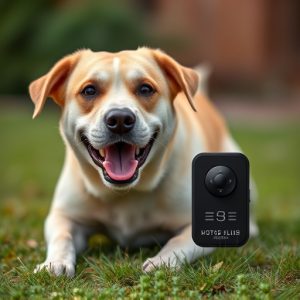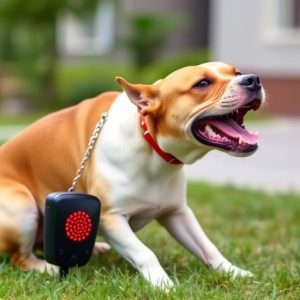Maximize Ultrasonic Repeller Effectiveness: Best Placement Strategies
Ultrasonic repeller devices, effective against animals like rodents, birds, and insects, should be s…….
Ultrasonic repeller devices, effective against animals like rodents, birds, and insects, should be strategically placed near unwanted animal activity areas, both indoors and outdoors. Key placement includes targeting specific zones rather than general coverage, angling for wide area protection, regular movement to prevent habituation, and hiding them out of sight and reach. The best positions vary by animal type and location; for example, placing devices along fences or windowsills deters wildlife while keeping pets away from certain areas indoors. Regular testing is crucial for maintaining their efficiency over time.
“Unleash a powerful yet humane solution to animal training with Sonic Animal Training Safety Devices. This innovative technology harnesses the science of ultrasonic repellers, offering a non-invasive approach to managing behavior. Discover how these devices work and explore the best placement strategies for optimal results. From understanding the underlying mechanics to real-world success stories, this guide covers everything you need to know about safe and effective use. Enhance your training regime today with these game-changing sonic repellers.”
- Understanding Sonic Animal Training Safety Devices
- The Science Behind Ultrasonic Repellers
- Best Placement Strategies for Optimal Effectiveness
- Considerations for Safe and Effective Use
- Real-World Applications and Success Stories
Understanding Sonic Animal Training Safety Devices
Sonic animal training safety devices, also known as ultrasonic repellers, are innovative tools designed to protect both animals and humans in various environments. These devices emit high-frequency sound waves that are unpleasant to animals but generally harmless to humans and pets. By understanding how they work and the best placement for these ultrasonic repeller devices, users can maximize their effectiveness.
The optimal location for placing an ultrasonic animal deterrent is near areas where unwanted animal activity is occurring, such as entry points to homes or buildings, gardens, patios, and other outdoor spaces. Strategically positioning them at angles that cover a wide area ensures consistent protection. Regular movement of these devices around the targeted zones can also help maintain their efficiency, as animals may become accustomed to static placement over time.
The Science Behind Ultrasonic Repellers
The Science Behind Ultrasonic Repellers
Ultrasonic repellers utilize sound waves at frequencies beyond human hearing, typically ranging from 20 kHz to 50 kHz. These high-frequency sounds are perceived as annoying or distressing to animals, prompting them to avoid the area where the device is installed. The mechanism is based on the principle that each animal has a unique sensitivity to specific ultrasonic tones, making it effective against various pests like rodents, birds, and insects. Unlike traditional repellents that rely on chemicals or physical barriers, ultrasonic devices offer a humane and environmentally friendly alternative.
The best placement for ultrasonic repeller devices is in strategic locations where they can effectively cover the targeted area. For indoor use, placing them near entry points, such as windows and doors, or in rooms where pests are commonly found, can be highly effective. Outdoors, mounting them on fences, trees, or other structures can help deter animals from gardens, patios, or agricultural fields. Regular movement of these devices can also enhance their effectiveness, as it ensures the sound waves remain unpredictable to the target animals.
Best Placement Strategies for Optimal Effectiveness
When it comes to using ultrasonic repeller devices, the best placement strategy is to position them in areas where the presence of animals is a concern but direct line-of-sight access isn’t possible. These devices work most effectively when they emit sound waves unnoticed by humans but disturb animals with their high-frequency tones. Place the devices strategically near entry points like windows, doors, vents, and other potential animal access points to deter them from entering.
Furthermore, consider the specific type of animal you’re trying to repel. Different species have varying sensitivity levels to ultrasonic frequencies. For instance, devices designed for rodents might need to be placed closer to walls or ceilings where rodents tend to traverse, whereas larger animals like deer or cats may require placement in open areas or near their feeding grounds. Regularly testing and adjusting the device’s position can optimize its effectiveness over time.
Considerations for Safe and Effective Use
When considering the safe and effective use of a Sonic Animal Training Safety Device, proper placement is paramount. The best location for ultrasonic repeller devices is in areas where wildlife intrusion is most common, such as along fences, rooftops, and windowsills. These high-traffic zones will ensure maximum exposure to the device’s sound frequency, which is typically above the human hearing range but irritating to animals like rodents, birds, and insects.
To avoid potential harm to pets or humans, it’s crucial to position these devices out of reach and line of sight. Strategically placing them in hard-to-reach areas also reduces the likelihood of accidental activation by people. Additionally, consider environmental factors like weatherproofing for outdoor installations to prevent water damage. Regular maintenance and testing are essential to ensure optimal performance over time.
Real-World Applications and Success Stories
In real-world applications, ultrasonic repeller devices have proven to be a game-changer in various sectors. These innovative tools are particularly effective for keeping animals away from sensitive areas like farms, gardens, and even airports. For instance, farmers have successfully used them to prevent wildlife from damaging crops, ensuring better yields and reduced stress on livestock. In urban settings, these devices help maintain cleanliness by deterring birds and rodents from public spaces, leading to healthier environments.
Success stories abound in the use of ultrasonic repeller devices for both domestic and commercial purposes. Many pet owners have witnessed the effectiveness of these tools in keeping cats and dogs at bay from specific areas, such as indoor plants or furniture. In industrial settings, companies have adopted these devices to control pests, enhancing workplace safety and maintaining equipment integrity. The best placement for ultrasonic repeller devices is often near entry points, perimeters, or areas where animals are prone to gather, ensuring maximum coverage and minimal disruption to human activities.
Sonic animal training safety devices, particularly ultrasonic repellers, offer a humane and effective solution for managing unwanted behavior in pets. By understanding the science behind their operation and implementing best practices for placement, these devices can significantly enhance training outcomes while ensuring the well-being of animals. Safe and responsible use, as highlighted by real-world success stories, underscores their potential to revolutionize pet training methods. When strategically positioned, ultrasonic repellers can disrupt problematic behaviors without causing harm, making them valuable tools for any animal trainer or owner seeking positive reinforcement techniques.


